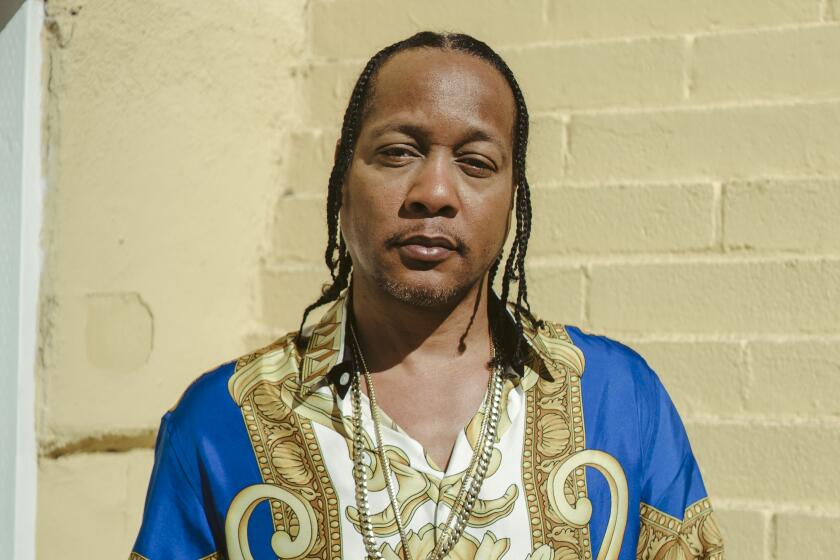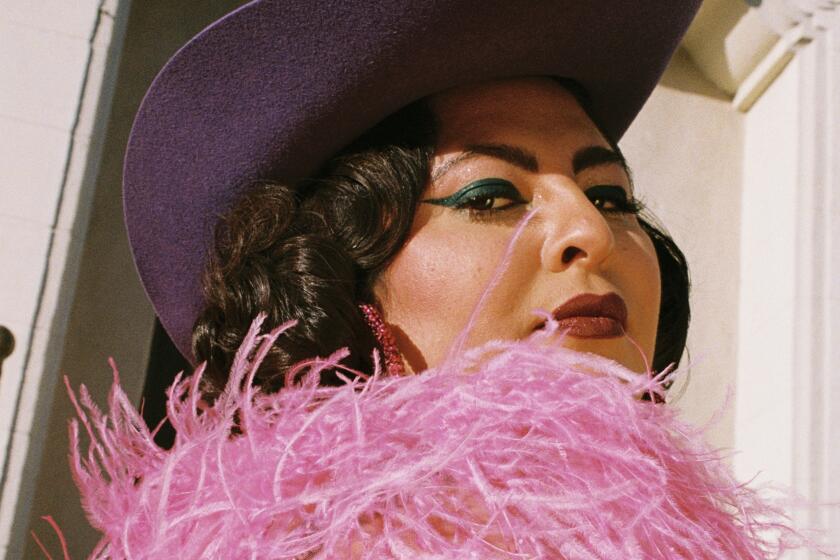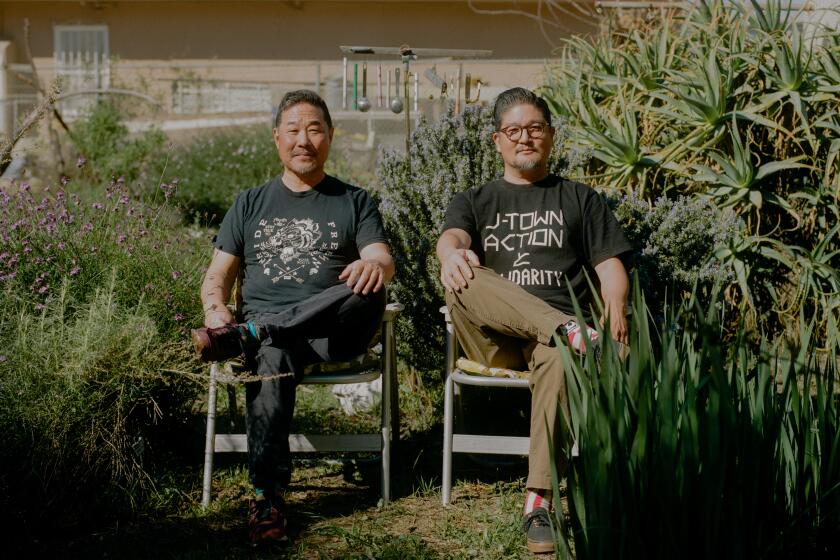- Share via
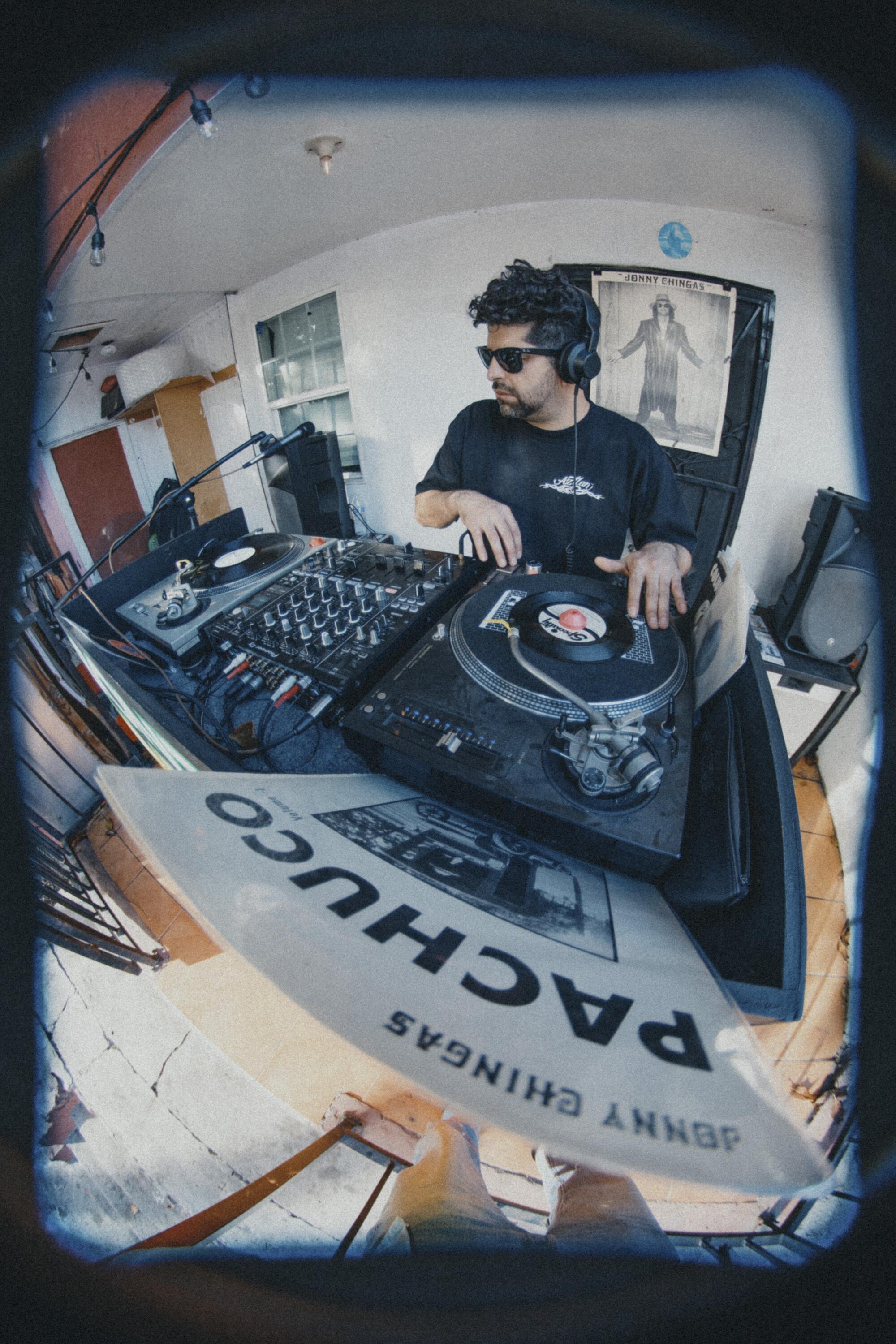
This story is part of Image issue 9, “Function” a sonic and visual reminder that there ain’t no party like an L.A. party. Read the full issue here.
Generally, he’s a shape-shifter. He literally changes his identity as he moves through life: Jonny Chingas. Raul Garcia, which he goes by on some records. Rudy Garcia. He has all these aliases. You can see him kind of signing a deal and having to change his name to release that same rhythm, and then changing the lyrics. He was almost, kind of, anarchy vibes. But this is just a musician who’s not really breaking any laws. Maybe some copyright laws at some point. That’s why he’s becoming all these different people, characters. How can you evade the man and continue to put out stuff?
There are not too many authorities on the dude, or people who knew him. It’s kind of like trying to find Batman. You know what I mean? We all know who that guy is because there’s movies and stuff like that. But if you’re really looking for Batman? It’s kind of like that. Jonny Chingas is this phantom, myth, legend.
In the early 2000s, I’m going to art school and I come home to my apartment. There’s a record leaning up on the metal gate of my door. It has like an old Model T car on it with a little license plate that says “Se Me Paró.” I see the typography: “Pachuco Volume 1.” I realized, Oh, snap! This is Jonny Chingas — the real deal! It’s no longer word of mouth. There’s a physical object there. I take it inside my house and I play it. I hear the song “Cholo” for the first time, hear the song “Menudo” for the first time, hear the song “Poquito Soul” for the first time, “Qué Pasa” and his popular “Se Me Paró.”
I’m really into rare grooves, rhythm and blues, soul records — so this hit home. But it’s coming from a total Chicano, Mexican American gaze. It wasn’t the first time, but it was the strongest I heard Caló represented. Caló is a language that cholos use here that’s derivative of Spanish, English and sometimes even Nahuatl used by some nations in Mexico. I was just completely struck by the musicianship, by the language that was used in this record. I quickly understood that this person is speaking to a specific audience. He’s not necessarily trying to get at Middle America. This is for a specific people by that specific people. And on top of that, the quality of the musicianship and the recording were high-quality.

From that recording, I’m like, What else did this guy record? This is a private press label that Pachuco Volume 1 is on: Billionaire Records. Not that all of Jonny Chingas’ stuff is private-pressed. He had some stuff on Specialty Records, which was a huge, really popular rhythm and blues label. He was also on United Artists. And he was also on CBS. I started looking for more of this stuff. Being somebody who’s into electronic dance music and early techno and house, I started seeing Jonny Chingas pop up on some of those compilations — one is called called “Retro Techno Disco.” There’s a song on there called “Samba.” After that, I run into this 12-inch called “Automatic Lover,” which is even more turned up on the dance tip. Then I find “Pachuco Volume 2,” which is a beautiful cover that has a pair of Stacy Adams shoes. The graphic design really spoke to me as a visual artist, and loving typography and graphic design. I just start finding more: bass tracks (like Miami bass; he has this track called “Mini Truck Lover”), rock songs, old-school rhythm and blues. Oldies-but-goodies-type tunes.
One day, I went looking for Jonny Chingas in Mount Washington. There was a guy who would sell records out of his front yard. I roll up to his crib. “You got any Eastside stuff?” I asked. “Yeah, I do. Here’s a box, check it out.” I come across this track on Billionaire Records called “Night Stalker.” Being from Los Angeles, knowing the history of the Night Stalker — they caught the Night Stalker on the street that my cousin lives on — I take the track home. It’s a colored vinyl — red with spots of black and white. Kind of murderous-looking. And Jonny Chingas is straight rapping on there. He’s really spitting man, and the beats are hitting hard. 808 beats. Reminiscent of Arabian Prince on some N.W.A beats, Dre beats. Hard West Coast rap beats. And he’s rapping about Richard Ramirez, who’s the serial killer, the Night Stalker.
After that, I find a track called “LAPD” and it’s about the Rodney King beating. That’s when I was really like, I need to look for everything: any cassette tape, any CD, anything on YouTube. I was looking everywhere, obsessed, because something inside me was like, this person needs to be — and deserves to be — catalogued and spoken about in a critical way, within music, but also outside of music. The political, socioeconomic, hood realm, art realm, music realm. Somebody who understands all these things. This is how this person needs to be thought of, explained. Through all these nuances about his practice.
More from The Function
Jason Parham talks to DJ Quik about his legacy
Born X Raised takes you inside the most epic ragers in L.A.
Julissa James dives into the subconscious of indie-pop prodigy Hana Vu
The homies let us know what makes an L.A. party an L.A. party
San Cha tells Suzy Exposito how she learned to sing from a divine place
Murals in Chicano neighborhoods tell stories. They’re compiled of many different images, and times or whatnot to create this image to tell this broader story. Being a lover of music and history, a fine art practitioner into Chicano culture, Latin American culture, it dawned on me: I can make this sonic mural. Taking that same approach, but this can exist in pure sound. I always had wanted to put out a mixtape. But I wanted it to archive Jonny Chingas’ story. A cassette tape that you would put a mixtape on is electromagnetism. So I thought, This is an electromagnetic mural.
I put it on a double cassette tape, which also references the Eastside early raver culture —those parties would be recorded and those parties are long. They would put out these double cassettes — that was always kind of shocking to me to see this extra-large jewel case, two pieces inside the flyer, the date that it came from, and so on. I took that format and expanded on it. I just went full force. There’s a painting. I made 100 copies of this double cassette. And I just gave them to friends who were into Jonny Chingas — some hardcore crate diggers, some gallerists, some artists. It was never for sale.

Buy a copy of Function
It’s true what they say: ain’t no party like an L.A. party. Image magazine is back with Issue 9, the first issue of 2022.
Shop the L.A. Times Store
This tape has been the vehicle for learning new things. It’s actually the thing that’s helped me acquire more information and knowledge about Jonny Chingas and his practice. Recently, I performed the sonic mural “Jonny Chingas Sonic Mural” for the first time with vinyl records and tapes at the record shop Sonido Del Valle [at 2108 1st St.] in Boyle Heights, where Jonny Chingas is best known. The performance took place on Saturday, Feb. 19, from 3-5 p.m. After my performance I opened up the turntables to the public to bring and share their own Jonny Chingas records, tapes, images and stories. J Vibe — collaborator of Jonny Chingas, beatmaker of “LAPD,” beatmaker of “Too Much Work, Too Little Sex,” beatmaker of “Mini-Truck Lover” — ended up going to the performance. I don’t even know how he found out. But he rolled up and he broke knowledge with us.
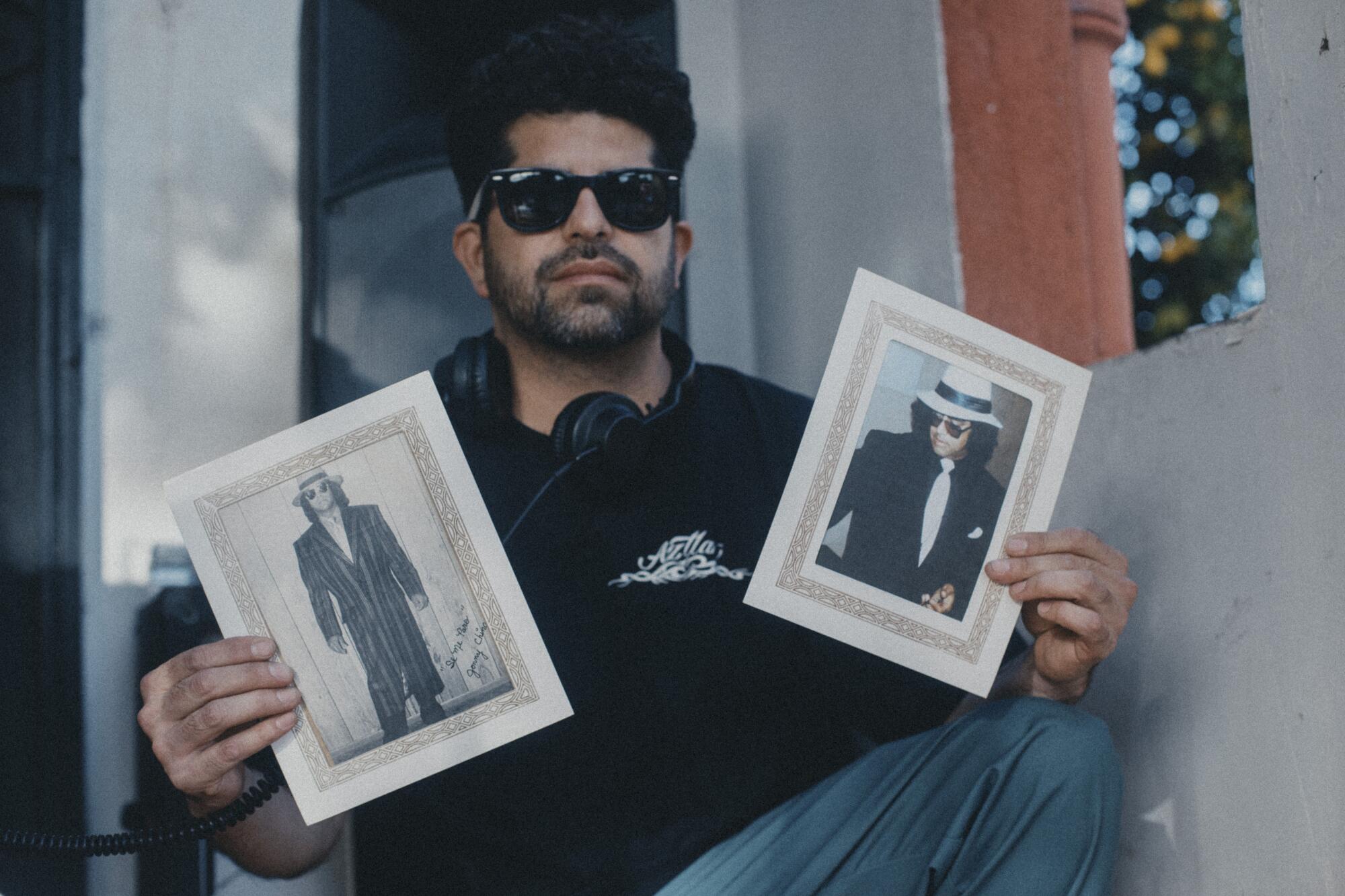
While I was performing it, it hit me: Man, this is amazing! I feel like it holds up. I was talking about the tracks during the performance in case people didn’t know this stuff — I want to give this information: Jonny Chingas was a conceptual performance artist, news reporter, multi-instrumentalist, entrepreneur, record label owner, Mexicano, Chicano, husband, father. A real bohemian. Future thinker. Jonny Chingas paints a picture of what it’s like to live, be in, go through the barrio. He can give you a sense of what the barrio is, how the barrio thinks, how the barrio feels, what it is — a real reflection of the Eastside, Southwest brown neighborhood.
I am really proud of the “Jonny Chingas Sonic Mural.” The only unfortunate part of the project is I’ve learned about other things that I would like to include.
Gary “Ganas” Garay (b. 1977) is a multidisciplinary artist, performer, DJ and record collector based in Los Angeles. His artistic practice is informed by his lived experiences crossing the U.S.-Mexico border, recognizing and drawing attention to the rich and dynamic culture of everyday life. He is the founder of Mas Exitos music collective, host of the dublab program Mas Exitos con Ganas, and co-founder of Discos Rolas, a record label and collaborative project dedicated to the cosmic sounds and musical histories of Latin America.

